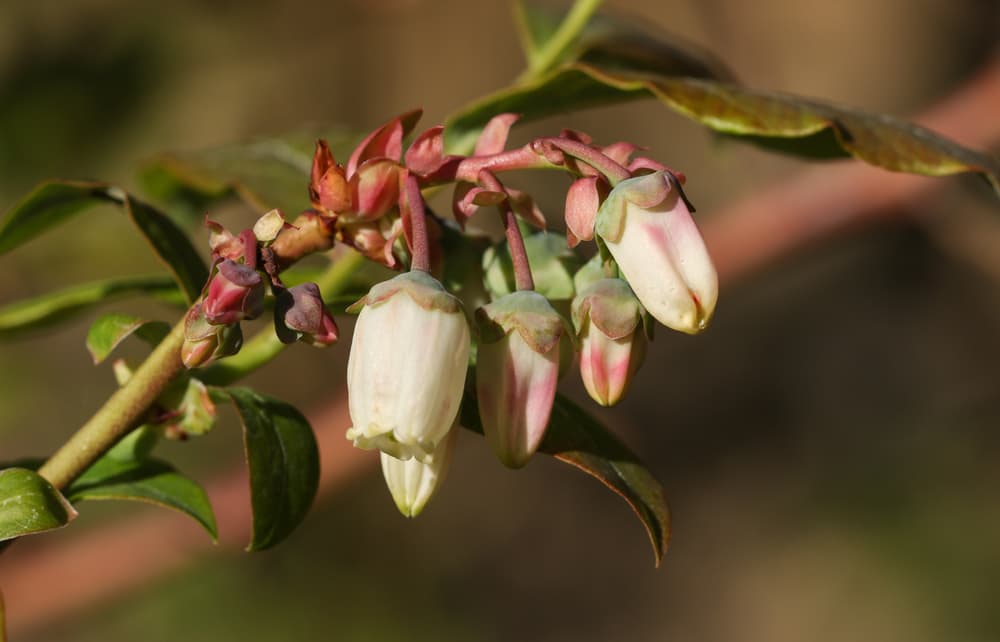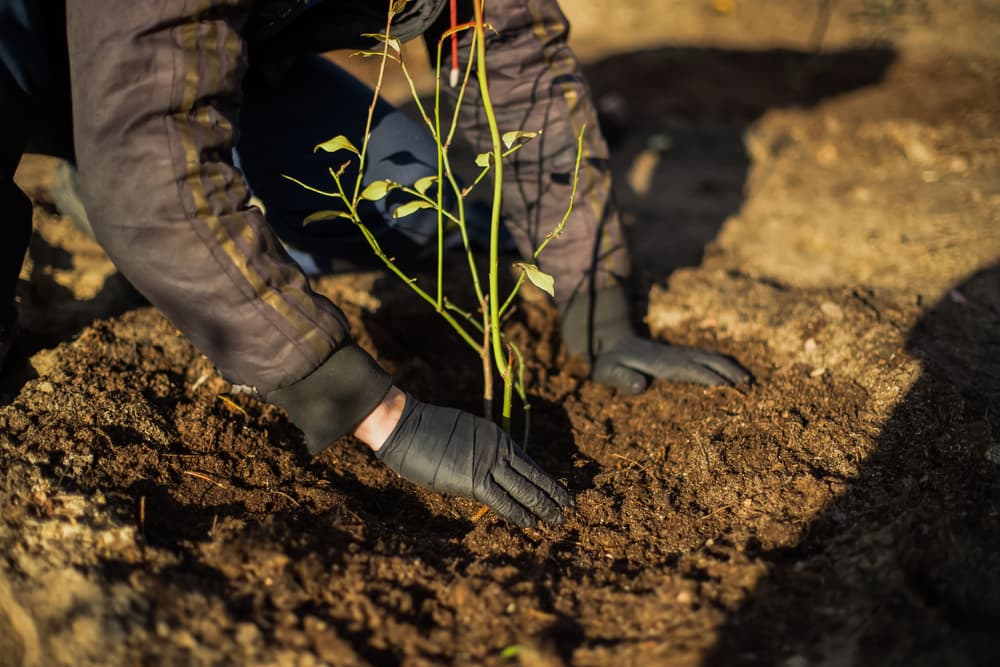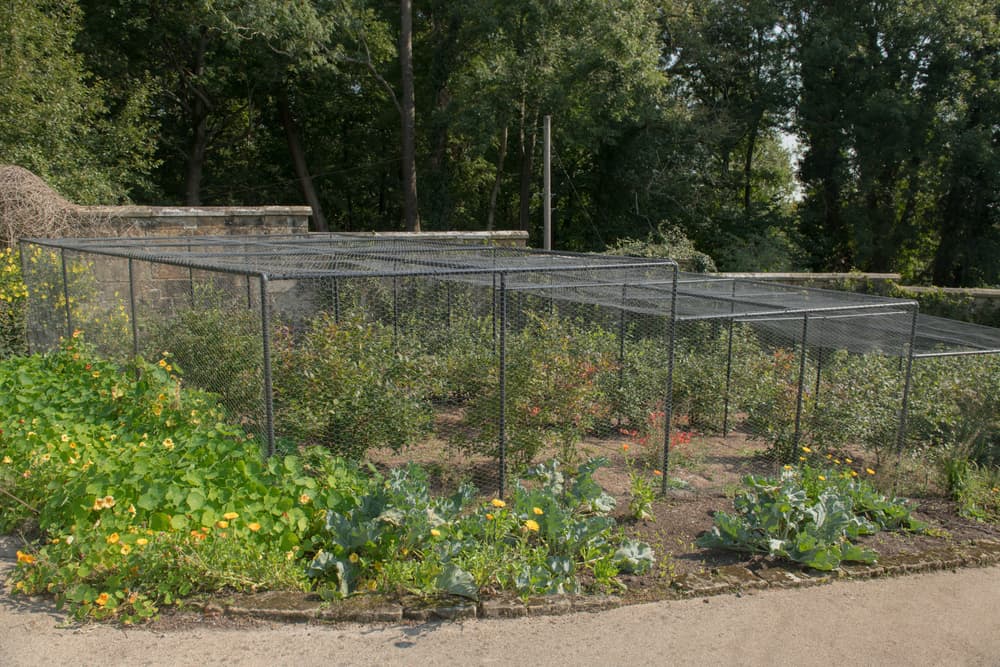Blueberry Shrubs: Nursery Owner Lorraine Summers Shares Her Tips For Tasty Fruit

FRUIT > BLUEBERRY

Elizabeth is a Permaculture Garden Designer, Sustainability Consultant and Professional Writer, working as an advocate for positive change. She graduated from the University of St. Andrews with an MA in English and Philosophy and obtained a Diploma in Applied Permaculture Design from the Permaculture Association.
Reviewed By COLIN SKELLY

Colin is a Horticulturist and Horticultural Consultant with experience in a range of practical and managerial roles across heritage, commercial and public horticulture. He holds the Royal Horticultural Society’s Master of Horticulture award and has a particular interest in horticultural ecology and naturalistic planting for habitat and climate resilience.
Contributions From LORRAINE SUMMERS

Lorraine has worked with camellia plants for over 40 years. Based in Wimborne (Dorset), the nursery has various camellia species, cultivars and hybrids for sale and has links to the International Camellia Society.
IN THIS GUIDE
Blueberries are delicious fruits that can be grown in many gardens as long as you provide the acidic conditions they need to thrive.
In this guide, we will take a closer look at these berries, why growing them could be a great idea and where and how to grow blueberries in your garden.
We have collaborated with Lorraine Summers across our blueberry growing guides, the owner of Trehane Camellia and Blueberry Nursery, a specialist plant nursery based in Dorset.
“Blueberry plants are easy to grow and they produce lovely, tasty berries,” Lorraine says when asked why she enjoys growing these tasty fruits.
Blueberries grow on shrubs native to North America which are classified as Vaccinium (typically Vaccinium corymbosum or ‘highbush’ type).1Vaccinium corymbosum. (n.d.). Kew Royal Botanic Gardens. Retrieved March 13, 2023, from https://powo.science.kew.org/taxon/urn:lsid:ipni.org:names:261823-2
Overview
| Botanical Name | Vaccinium |
| Common Name(s) | Blueberry |
| Plant Type | Fruit / Shrub |
| Native Area | North America |
| Hardiness Rating | H6 |
| Foliage | Lobed, deciduous leaves |
| Flowers | Small white or pale-pink flowers |
| When To Sow (Bare Root) | January, February, March, November, December |
Sunlight
Preferred
Full Sun or Partial Shade
Exposure
Sheltered
Size
Height
1 – 1.5M
Spread
1 – 1.5M
Bloom Time
Spring
Soil
Preferred
Loam, sand
Moisture
Moist but well-drained
pH
Acidic
In Europe, related species, bilberries, are sometimes described as blueberries – and these also sit within the Vaccinium genus – usually Vaccinium myrtillus (often referred to as the ‘European Blueberry’).2Bilberry. (n.d.-b). The Wildlife Trusts. Retrieved March 13, 2023, from https://www.wildlifetrusts.org/wildlife-explorer/trees-and-shrubs/bilberry
These are closely related to North American blueberries, but though they grow prolifically in the wild in acidic, nutrient-poor soils in temperate and subarctic regions, they are challenging to grow – and so are not usually grown commercially or cultivated in gardens.

If you are thinking about growing blueberries in your garden – rather than foraging for bilberries in the wild – then you will be likely be looking for berry bushes which often come from hybrid cultivars, which were developed around the beginning of the 20th Century.3History of Blueberries. (2021, August 4). US Highbush Blueberry Council. Retrieved March 13, 2023, from https://blueberry.org/about-blueberries/history-of-blueberries/
The plants you can buy for your garden typically derive from these North American types.
Why Grow Them in Your Garden?
Though blueberries are not a native berry bush, they can still be a very useful and interesting addition to your home-growing repertoire.
By growing these at home, you can take advantage of the useful properties of these berries without having to buy them.
In the long term, this can save you money and reduce the amount of fruit you need to buy from the supermarket.
How To Grow Blueberries
Blueberries require a sunny location to fruit well.

Though some can cope with dappled shade, most cultivars will require at least 6 hours of sunlight a day to achieve the best yields.
They will also do best in a relatively sheltered spot, shielded from strong winds and colder temperatures.
Maintaining Soil Acidity
The most important thing to remember when it comes to growing blueberries relates to their soil requirements – blueberries are very fussy when it comes to soil pH.
They are ericaceous and require an acidic pH of below 5.5 in order to avoid any issues.4Acidifying Soil for Blueberries and Ornamental Plants in the Yard and Garden. (2003, April). Oregon State University. Retrieved March 13, 2023, from https://catalog.extension.oregonstate.edu/sites/catalog/files/project/pdf/ec1560.pdf

So unless you have acidic soil where you live, blueberries are best grown in containers or raised beds.
If you have a heavy clay soil, you should also grow blueberries in a raised bed or container, since blueberries like light and moist (yet free-draining) soil.
When To Plant
Blueberries can be purchased as bare-root plants in the autumn and planted during the dormant period.
You can also buy pot-grown blueberries from garden centres and nurseries all year round.

For best results, these should generally be planted out or repotted in the spring or autumn.
Avoid planting out during particularly hot and dry periods to reduce plant stress.
Note that not all blueberries are self-fertile – even those varieties which are self-fertile will generally produce better yields if grown with at least one companion.
You should usually, therefore, grow more than one blueberry plant, whether in pots or containers, raised beds, or in your acidic soil garden.
Planting Out
Once you have sourced your blueberries and chosen a site, prepared the soil if suitable, built raised beds or prepared containers with ericaceous compost – you should plant your blueberries at the same depth they were previously planted.
Firm the soil or potting mix around your plants – take care not to create large air pockets but also make sure that you do not compact it too much.

Water in well, then mulch around your blueberry bushes with a fresh mulch of pine needles, oak or beech leaf mould, conifer wood chip or bark chippings.
Companion Plants
Blueberries can of course be grown in pots on their own.
However, you can achieve better yields if you companion plant blueberries with other acid-loving plants which can attract pollinators during the spring when the bushes are in blossom, and attract other beneficial insects which help keep pest numbers down.
Some good choices are:
- Azaleas
- Camellias
- Spring flowering Irises
- Grape hyacinth (Muscari)
- Heathers (Erica)
- Lilac
- Lithodora diffusa
- Papaver cambricum (Welsh Poppy)
- Red campion (Silene dioica – can cope with a variety of soil pH conditions)
- Rhododendron
- Trillium erectum (Birthroot)
Blueberries can also be grown alongside other berry bushes which like acidic conditions, like cranberries, for example.
They also look good when planted alongside conifers, small Acers and/or holly.

Note however that blueberries have shallow roots, so companions should be placed outside the area of their root zone – and should not have invasive roots.
Around the sunny side of blueberries, you can also consider planting strawberries (which should be fine at a pH of around 5.5) and aromatic herbs like thyme and rosemary.
These are good companion plants which should be able to tolerate acidic conditions.
Blueberry Plant Care
As long as you meet the acidic conditions required, blueberries are generally relatively easy and trouble-free to grow.
Watering
Remember that blueberries grown in containers will need to be watered more frequently than those grown in the ground.

Tap water can reduce acidity, so be sure to always use rainwater when watering your blueberry plants.
Protection
Blueberries do not usually have a lot of pest issues.
However, birds can be an issue, and may eat all the berries before you get the opportunity.
If birds are a problem, you can consider protecting your blueberries with bird netting, or in fruit cages, polytunnels or other covering structures, as Colin Skelly, a Gardening Consultant and Horticulturist shares:
“The birds in my garden seem to be adept and judging the ripeness of my blueberries, such that they will strip them before I get the chance to harvest them.

“I have tried various bird-scaring ideas, such as CDs tied to a cane or fans that twirl in the wind, but the birds seem to scoff at these efforts.
“The only viable option that I have found (not wanting to erect a permanent fruit cage) is to construct temporary netting around the bushes using canes.”
Companion planting (ideally with plants which attract sap-suckers such as Nasturtium) should help you deal with aphids and other pests which can sometimes plague berry bushes.
Companion plants should attract predatory insects to keep their numbers down.
References
- 1Vaccinium corymbosum. (n.d.). Kew Royal Botanic Gardens. Retrieved March 13, 2023, from https://powo.science.kew.org/taxon/urn:lsid:ipni.org:names:261823-2
- 2Bilberry. (n.d.-b). The Wildlife Trusts. Retrieved March 13, 2023, from https://www.wildlifetrusts.org/wildlife-explorer/trees-and-shrubs/bilberry
- 3History of Blueberries. (2021, August 4). US Highbush Blueberry Council. Retrieved March 13, 2023, from https://blueberry.org/about-blueberries/history-of-blueberries/
- 4Acidifying Soil for Blueberries and Ornamental Plants in the Yard and Garden. (2003, April). Oregon State University. Retrieved March 13, 2023, from https://catalog.extension.oregonstate.edu/sites/catalog/files/project/pdf/ec1560.pdf
